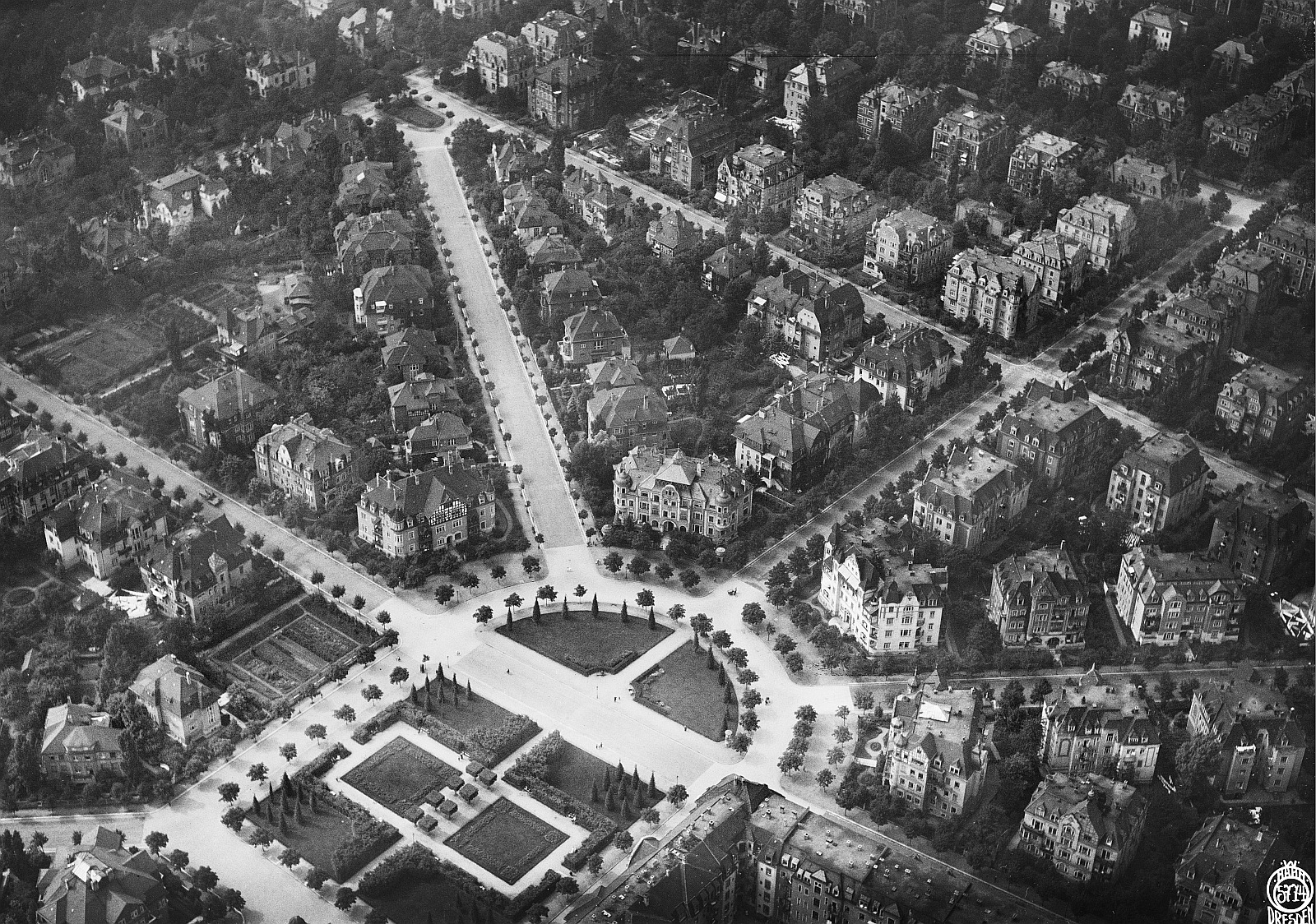Walter Hahn, Dresden-Striesen, Germany. View of the district with Waldersee-Platz (Stresemannplatz). Oblique aerial view from the east, 1924, SLUB Dresden Deutsche Fotothek.
Walter Hahn (1898-1969) took aerial photographs of the district of Striesen. This area developed, at the end of the 19th century in the east of the city, into a leafy residential suburb. A flourishing horticultural industry led to the growth of this historic village, which in turn contributed to the economic development of Dresden.
From 1860 onwards, Striesen expanded according to a town planning scheme which organised parcels of land into a grid pattern. Elegant villas and apartment buildings surrounded by gardens met the needs of the hygiene movement.
Striesen underwent a major industrial boom at the beginning of the 20th century thanks to, for example, camera and cigarette production, but this did not destroy its green and leafy character. This photograph from 1924 shows the picturesque buildings regularly arranged amongst the greenery: a pleasant living environment for its inhabitants, based on the concept of the garden city.
Sonia de Puineuf

